by Nazar Miszczuk…..
While browsing vintage Citroën cars online I came across a very interesting racing Citroën 1922 Model B2 near Strasbourg, France that had been professionally restored by Médéric Hauss.
I believe Médéric purchased his car in the summer of 2014 and two years later after restoration it was put up for an auction and was sold immediately in France.
Inspired by this fine speedster I began my research. I looked for information all over the internet and at any available publications about historic and surviving pre-war racing Citroën-speedsters.
I was able to compile a list of surviving Citroën speedsters from around the world with a few good examples below:
One of them was a rusted boat tail project somewhere in the city of Lakeside. But since no other information about the location was available besides this picture and a short description below, I saved and archived it to my documents moving on in my research.
I began an active phase of my search in order to purchase a pre-war frame or a project car preferably a 1920’s Citroën model here in the States where I currently reside. A few months later, in April 2016 I found a perfect candidate for this project. It was a Citroën 5HP 1920s model 3C and believe it or not, it was only 50 miles south of my garage and for a reasonable offer of $150 dollars. There was only one condition: I had to take it all and drag it off the farmer’s field where it was sitting for the last 30+ years.
The car didn’t have an engine, transmission, radiator, or a hood, but it had a good frame with suspension and tires, a steering column, an engine cowl, driveshaft and a differential with rear brakes and a few other rotten and rusted parts.
And so my project began. By summer 2016 it was all taken apart and sorted out. Steering column, breaks and wheels were repaired a few months later and soon after I managed to buy a Citroën 5HP radiator. As for the engine, after some research, financial reasoning, and engineering adaptation, as well as parts and service availability, I decided to go with a Ford model T engine. They are somewhat similar with mounting and frame installation. After all, Citroën model 5HP is a French answer to Ford Model T. My Ford engine became available at the end of summer 2016 and was successfully delivered to my garage.
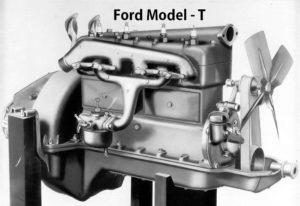 Model – T: 2900 cc, 4 cylinders, 20HP, 72 km/h, 225 kg.
Model – T: 2900 cc, 4 cylinders, 20HP, 72 km/h, 225 kg.
1908 Model T Engine: One of the most important Model T innovations was an improved engine block. The new engine block was cast in one piece called “en-bloc.” This new 4 cylinder higher-compression engine produced 22 horsepower. From the collections of The Henry Ford and Ford Motor Company.
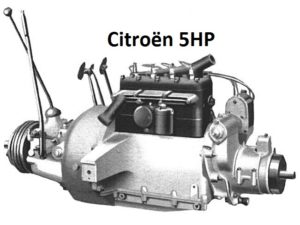 Citroën 5HP 3C: 856 cc, 4 cylinders, 11HP, 60 km/h, 120 kg.
Citroën 5HP 3C: 856 cc, 4 cylinders, 11HP, 60 km/h, 120 kg.
For cylinder volume comparison shown below is a Citroën engine piston inside a Ford engine cylinder:
It looked like I had all major components beside the boat tail body. But that was going to be my last phase of the project. In the fall of 2016 I worked on frame and suspension.
The frame was sand-blasted and primed in early December of 2016 and in early 2017 I began working on engine mounting brackets to adopt Model T engine into Citroën 5HP frame.
The engine mounting brackets were engineered and manufactured by the end of winter 2017 and then all of a sudden I got a Facebook message from my friend with a link to an eBay auction for Citroën 5HP 1920s boat tail speedster located in Walnut Creek, CA only 50 miles north of my garage.
It was exactly what I needed! A Citroën 5HP 3C model converted into racing 1920 speedster for a reasonable price and in close proximity to my location!
For the next few days I was not able to sleep, nor was I able to think anything other than this car. I think that the seller of this car saw the passion in me and besides all the other offers, he decided to transfer the custody of this to car to my name. Yay!
It is by mutual gentlemen’s agreement that he is allowed to take this car for a car show any time he wishes.
The car came with and original flat-head Citroën engine, custom 1920s speedster boat tail body on an unmodified frame, custom 1920’s aftermarket speedometer, odometer, custom 1920s French racing steering wheel, and a modified speedster windshield. Also included in the deal – a box of spare parts, old documents and photos.
It took me few months to go over the car, spare details and the box of old documents. From what I understood, the car was in Basel, Switzerland in 1950’s and in the 1970’s it was shipped to San Diego, California.
While browsing through the documents that came with the car I noticed the name of a city of Lakeside. Something suddenly clicked in my mind and I recalled the old photo from my registry. That was it! It was the same car I had on my initial research list.
At the end of summer 2017 I wrote few letters to people whose names and addresses I found in the old documents. They were in Lakeside, California and in Basel, Switzerland. I was hoping to learn more about the car… To my surprise I didn’t have to wait long, the responses came soon via email and a regular mail.
Below is the letter that I wrote to Peter and Michael Rudin:
The following is the reply that I received:
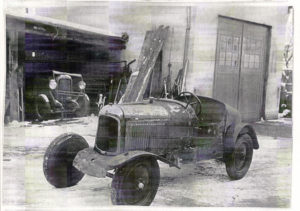 Year 1955, pre-restoration condition.
Year 1955, pre-restoration condition.
 Year 1955, restoration in progress. Basel, Switzerland.
Year 1955, restoration in progress. Basel, Switzerland.
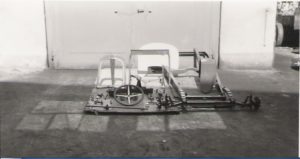 1964 restoration in progress. Basel, Switzerland.
1964 restoration in progress. Basel, Switzerland.
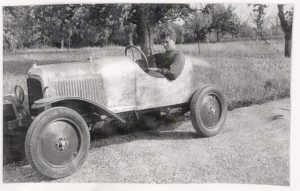 1964, restoration in progress. Basel, Switzerland.
1964, restoration in progress. Basel, Switzerland.
We had an extensive correspondence about the history of the car the summary of which I am including below:
From what we know Jules Vögtlin from Mulhouse, France owned the car from mid-1930’s until mid-1950’s storing it at his junkyard Ile Napoleon in Mulhouse, France (which now is a shopping center – Centre Commercial Ile Napoléon). In 1955 Peter and Mike Rudin from Basel, Switzerland came into possession of the car and began restoration. Fifteen years later it was shipped to California where it has been ever since.
Unfortunately, no information is currently available about the early history of the car. We don’t know who made a conversion in 1920’s and where and how this vehicle was used. Given all the modifications on the car one would assume it was used for racing. I am still conducting research and going through French archives looking for any pictorial evidence of this car being used for local racing.
Following is some interesting information that’s worth mentioning:
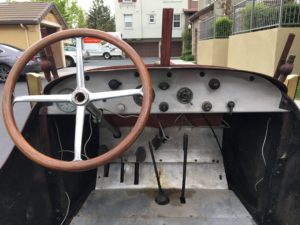 The dashboard and steering wheel on the car is custom made with all period 1920’s after market gauges.
The dashboard and steering wheel on the car is custom made with all period 1920’s after market gauges.

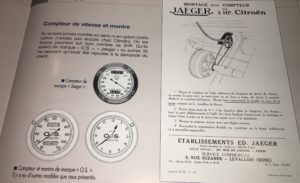 The speedometer and odometer are after-market add-ons that were available in 1920’s.
The speedometer and odometer are after-market add-ons that were available in 1920’s.
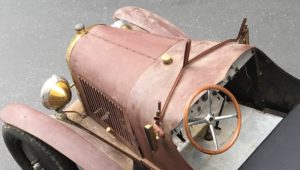 The windshield is modified from an original single panel frame to cut-down double speedster windshield.
The windshield is modified from an original single panel frame to cut-down double speedster windshield.
The original aluminum factory steering wheel has been replaced with a larger stainless steel steering wheel commonly found on high-performace French 1920’s cars.
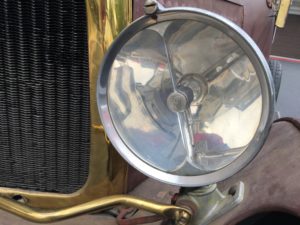
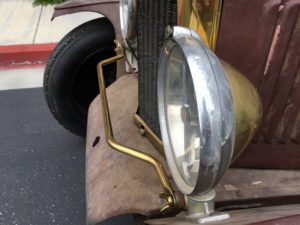 Factory headlights were replaced with high quality period-correct Marchal headlights.
Factory headlights were replaced with high quality period-correct Marchal headlights.
The engine currently has a factory stock 856 cc 4-cylinder flat-head engine. However, it will be reinstalled with 1920’s period-correct Super-Culasse overhead valve block:
The car body was modified back in 1920’s. From original factory stock we only have an engine bonnet and stock front fenders. The rest of the panels including cowl, boat tail, and front panel are custom made. At one point lower side panels were removed and stepping plates were added in 1955. The frame of the car appears to be an unchanged C3-type model:
Wheels are solid disc by Michelin and current tires are by Dunlop 730 x 130:
I hope to complete the second restoration of the car by 2019 to be able to celebrate the Citroën Centennial in style!


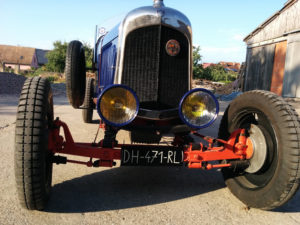
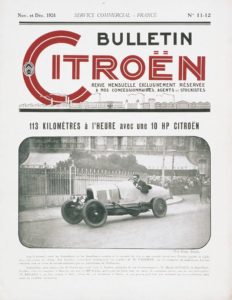
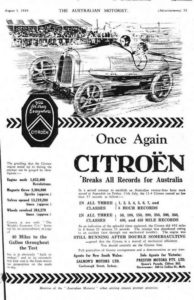
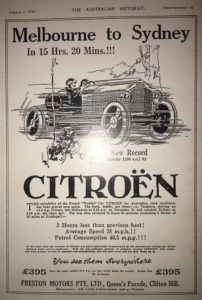
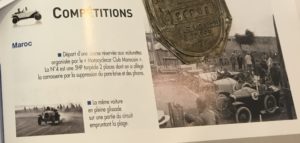
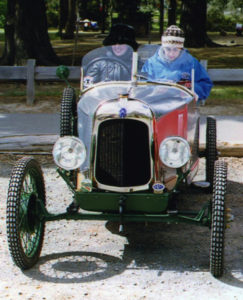
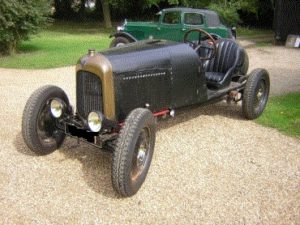
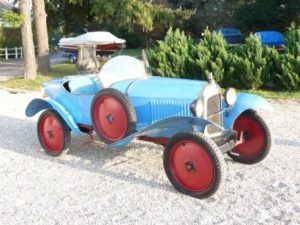
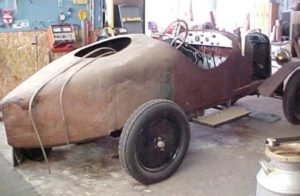
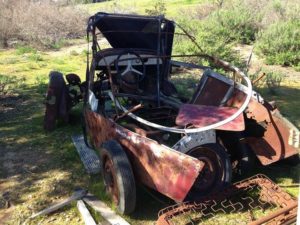

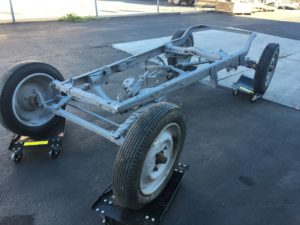
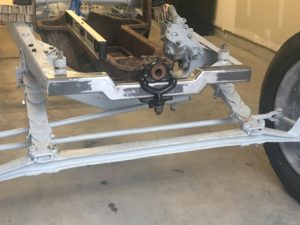

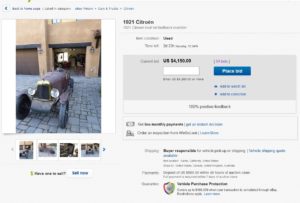
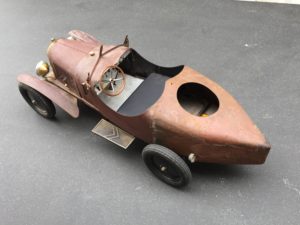


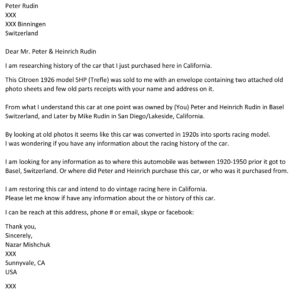
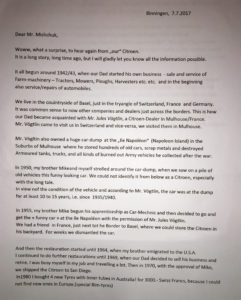
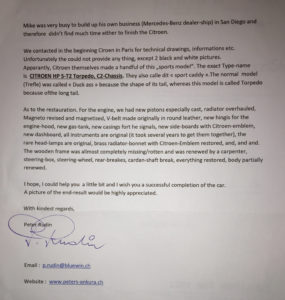

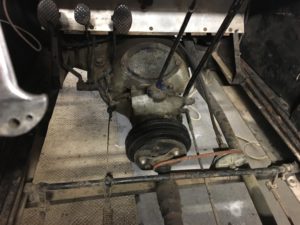
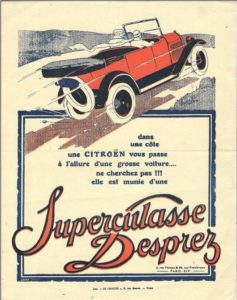
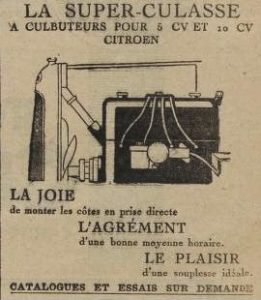
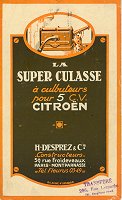
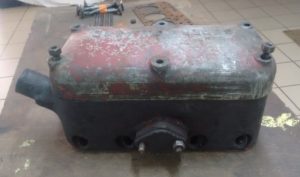
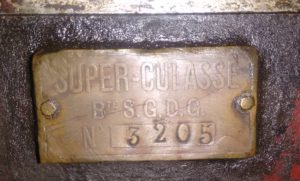
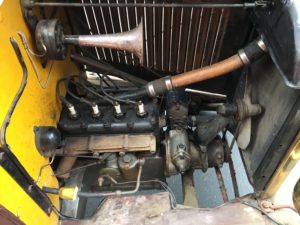
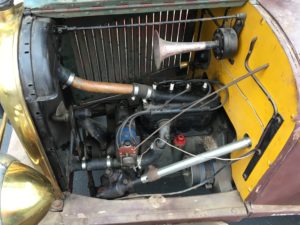

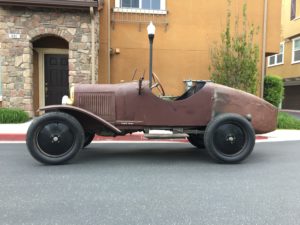

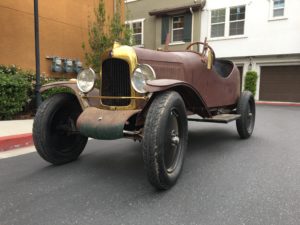

muy buena la nota. queria saber si pudieron terminarla. Translate: “very good note. I wanted to know if they could finish it”
It makes me happy that someone has so much fun restoring a car that has been disassembled like this. My husband, Peter Rudin, was very happy to read the whole story. Unfortunately he passed away on 1/22/23. Mike Rudin was also very enthusiastic. This is how an old car lives on. Thank you for your love of old cars.
Original German language post: Das freut mich, dass jemand soviel Freude hat ein so zerlegtes Auto zu restaurieren. Mein Mann, Peter Rudin, hat sich sehr gefreut die ganze Geschichte zu lesen. Leider es er am 22.1.23 verstorben. Auch Mike Rudin war ganz begeistert. So lebt eine altes Auto weiter. Herzlichen Dank für Ihre Liebe zu alten Autos.